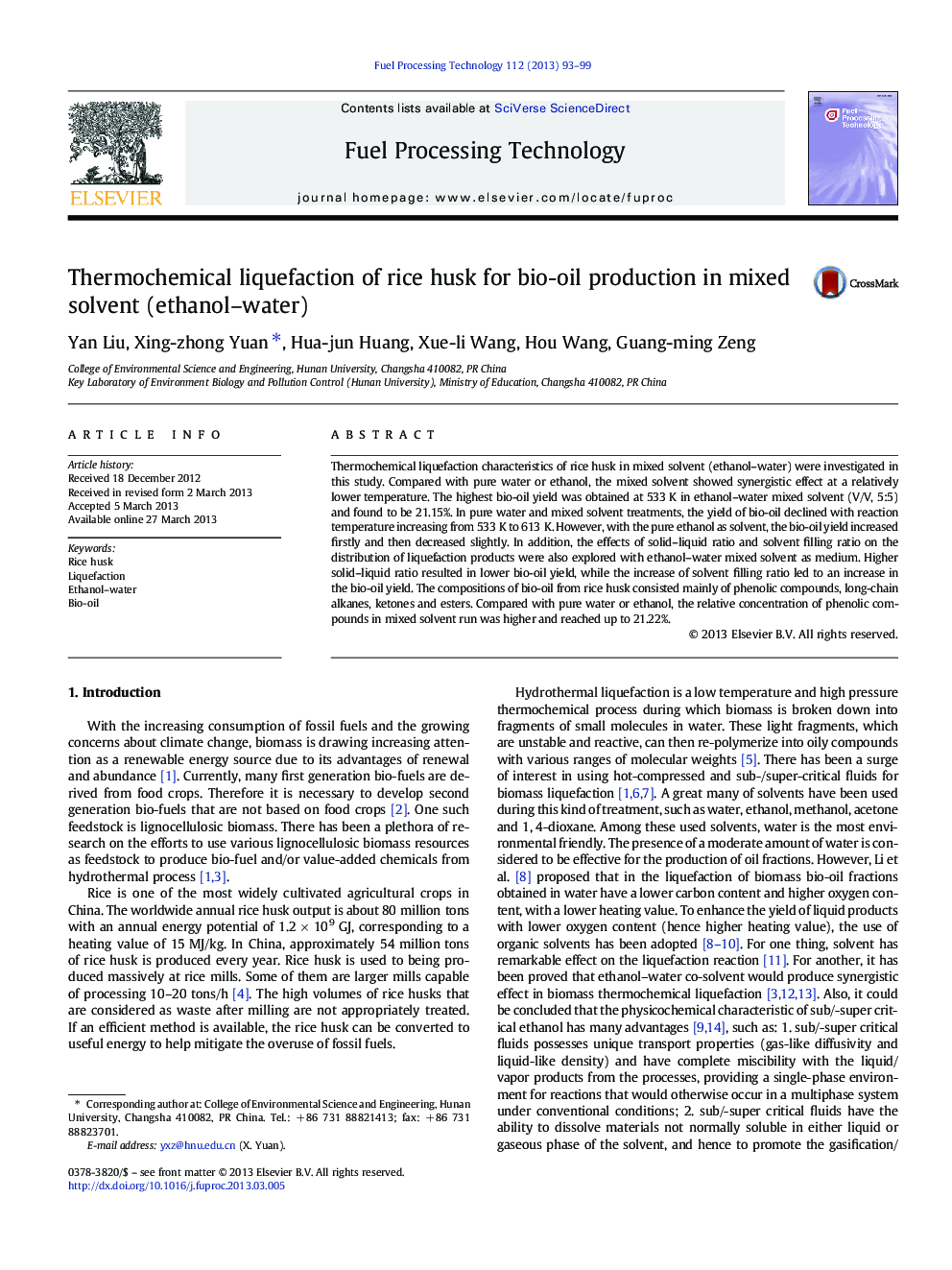| Article ID | Journal | Published Year | Pages | File Type |
|---|---|---|---|---|
| 209967 | Fuel Processing Technology | 2013 | 7 Pages |
•Liquefaction of rice husk in ethanol–water mixed solvent was investigated.•Under tested conditions, ethanol–water mixed solvent displayed synergistic effect.•Too high solid–liquid ratio would suppress the production of bio-oil.•Higher solvent filling ratio may result in higher yield of bio-oil.•The main components of bio-oils were saccharides and phenolic compounds.
Thermochemical liquefaction characteristics of rice husk in mixed solvent (ethanol–water) were investigated in this study. Compared with pure water or ethanol, the mixed solvent showed synergistic effect at a relatively lower temperature. The highest bio-oil yield was obtained at 533 K in ethanol–water mixed solvent (V/V, 5:5) and found to be 21.15%. In pure water and mixed solvent treatments, the yield of bio-oil declined with reaction temperature increasing from 533 K to 613 K. However, with the pure ethanol as solvent, the bio-oil yield increased firstly and then decreased slightly. In addition, the effects of solid–liquid ratio and solvent filling ratio on the distribution of liquefaction products were also explored with ethanol–water mixed solvent as medium. Higher solid–liquid ratio resulted in lower bio-oil yield, while the increase of solvent filling ratio led to an increase in the bio-oil yield. The compositions of bio-oil from rice husk consisted mainly of phenolic compounds, long-chain alkanes, ketones and esters. Compared with pure water or ethanol, the relative concentration of phenolic compounds in mixed solvent run was higher and reached up to 21.22%.
